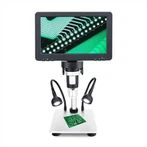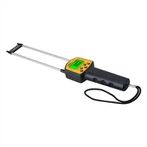Which toxic gases are mainly detected by the handheld gas detector?
In some confined spaces and confined spaces, there is a certain concentration of toxic and harmful gases, and oxygen deficiency or oxygen enrichment may also occur. Before we enter these limited spaces, for the sake of personal safety, it is necessary to detect the toxic and harmful gases in the space. The scientific detection tool that needs to be used at this time is a handheld gas detector. So how to use the handheld gas detector? What gases can it detect?
How to use the handheld gas detector?
The body of the handheld gas detector is small and light, which is convenient for on-site personnel to carry, and the warm-up time is short. Therefore, you only need to ensure that the instrument is powered on, and press and hold the power button according to the instruction manual. The instrument will start normally and after normal warm-up , it can be used for detection.
What kind of gas is mainly detected by the handheld detector?
1. Toxic and harmful gases
The more common gases in a limited space are hydrogen sulfide, carbon monoxide, benzene, toluene, xylene, etc. After being inhaled by people, these toxic and harmful gases will produce different abnormal reactions in the body, threatening our personal health and safety.
Second, asphyxiating gas
The more common carbon dioxide, carbon monoxide, hydrogen sulfide, hydride and so on.
Asphyxiating gas often appears in various mines, cellars, cabins, cold storage and other places, and toxic asphyxiating gas often appears in reactors, storage tanks, steel cylinders and other containers.
Three, flammable and explosive gas
The more common flammable and explosive gases include hydrogen, carbon monoxide, methane, ethane, butane, natural gas, propylene, acetylene, etc.






